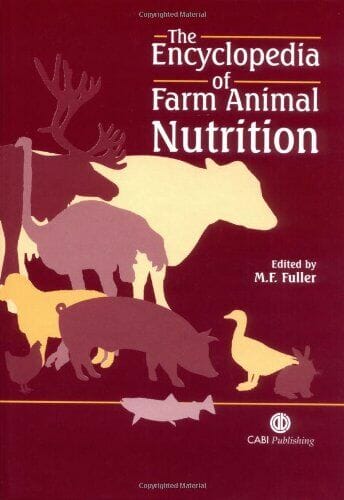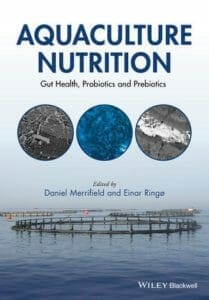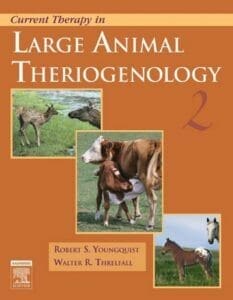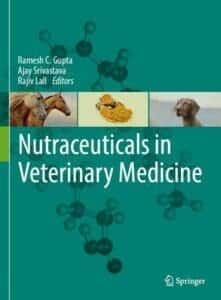The Encyclopedia of Farm Animal Nutrition

By M. F. Fuller
The Encyclopedia of Farm Animal Nutrition PDF deals with the whole of farm animal nutrition, embracing a wide range of disciplines, including physiology, biochemistry, veterinary medicine and feed technology. The encyclopedia contains approximately 2000 entries from 90 contributors. These entries range from short definitions to more discursive articles, all entries are fully cross-referenced to aid further research. The encyclopedia covers every type of farm animal found in both developing and developed countries, including cattle, sheep, pigs, chickens, goats, horses, fish, deer, buffaloes, rabbits and camelids, as well as ducks, turkeys, ostriches and other birds.
Sample Entries: Acylglycerol, A form of lipid made up of one glycerol molecule combined with three individual (not necessarily identical) fatty acid molecules attached to the glycerol by ester bonds. Acylglycerols form part of the neutral lipid fraction. Free fatty acids (FFAs), Also called non-esterified fatty acids (NEFAs), fatty acids that are not esterified to glycerol or another alcohol such as choline or cholesterol. In blood plasma or serum, FFAs are really not free but bound to plasma albumin. Locust bean, Properly the fruit of the African locust bean tree (Parkia filicoidea) but the name is frequently applied to the fruit of the carob tree (Ceratonia siliqua). The latter originated in the eastern Mediterranean region and is also found in the subtropics. The fruits are thick, fleshy (more so in the carob) pods each containing about a dozen seeds. The seeds are tough and must be crushed before feeding. The resulting meal has a high sugar and energy content and is very palatable but is low in protein (42-54 g kg-1). Oyster Shell, Oyster shells are almost pure calcium carbonate (95-99%) and are good sources of calcium for all classes of animals. Clam shells, conch shells, coral and coral sand can all be used for feeding. Shells that have been ground to coarse grit tend to be more palatable to laying hens and help grain digestion in the gizzard, as well as producing strong eggshells. For laying hens the shells should be ground to 0.5-2.0 mm and mixed 2:1 with finely ground limestone. Pacu, A commercially important freshwater fish native to the rivers of Brazil. This large migratory fish reaches 60 cm in length and is a scavenger that eats vegetation, mostly of fruit that falls into the water as well as an occasional small fish or insect. Pacu is one of the first native fish species to be successfully cultured in Brazil. A market size of 1-2 kg can be attained in 18-20 month at water temperatures of 22-280 C.
| File Size | 9 MB |
| File Format | |
| Download link | Free Download | Become a Premium, Lifetime Deal |
| Updates & Support | Join Telegram Channel To Get New Updates | Broken Link |
| Become a Premium |  |
| More Books: | Browse All Categories |













![Ettinger’s Textbook of Veterinary Internal Medicine 9th Edition [PDF+Videos] Ettinger’s Textbook of Veterinary Internal Medicine 9th Edition [True PDF+Videos]](https://www.vet-ebooks.com/wp-content/uploads/2024/10/ettingers-textbook-of-veterinary-internal-medicine-9th-edition-100x70.jpg)

![Textbook of Veterinary Diagnostic Radiology 8th Edition [PDF+Videos+Quizzes] Thrall’s Textbook of Veterinary Diagnostic Radiology, 8th edition PDF](https://www.vet-ebooks.com/wp-content/uploads/2019/09/textbook-of-veterinary-diagnostic-radiology-8th-edition-100x70.jpg)






